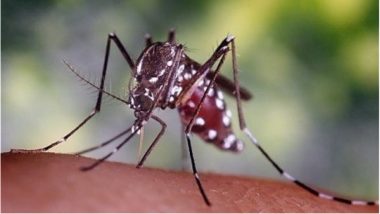World Malaria Day is celebrated every year on April 25. Malaria is a life-threatening disease which is caused by mosquito bites. Malaria is caused by plasmodium parasite and is transmitted in humans through the bite of Anopheles mosquito. Once an infected mosquito bites a human, the parasites multiply in the host’s liver before infecting and destroying red blood cells. Common symptoms of severe malaria include flu, fever, chills, deep breathing, abnormal breathing and impaired consciousness. In some places, malaria can be treated and controlled with early diagnosis. However, some countries lack the resources to do this effectively. The theme for World Malaria Day 2018 is ‘Ready to Beat Malaria’.
Theme & Significance
WHO joins partner organisations in promoting this year’s World Malaria Day theme, ‘Ready to Beat Malaria’. The theme underscores the collective energy and commitment of the global malaria community in uniting around the common goal of a world free of malaria. It also calls out worrying trends as captured in the 2017 World malaria report. The global response to malaria is at a crossroads. After an unprecedented period of success in malaria control, progress has stalled. The current pace is insufficient to achieve the 2020 milestones of the WHO Global Technical Strategy for Malaria 2016-2030 – specifically, targets calling for a 40% reduction in malaria case incidence and death rates.
Without urgent action, the major gains in the fight against malaria are under threat. On this World Malaria Day, WHO continues to call for greater investment and expanded coverage of proven tools that prevent, diagnose and treat malaria. Also, the World Malaria Day this year coincides with activities that will mark WHO’s 70th anniversary. As part of awareness campaigns and events organised to mark the day, the WHO will be sharing several interviews with leaders and advocates who have been involved in malaria control.
Who is at Risk?
Most malaria cases and deaths occur in sub-Saharan Africa. In 2016, nearly half of the world’s population was at risk of malaria. Some population groups are at considerably higher risk of contracting malaria and developing severe disease than others. These include infants, children under five years of age, pregnant women and patients with HIV/AIDS as well as non-immune migrants and travellers.
Today, malaria’s burden is highest in countries classified by the World Bank as low-to-middle income nations. African region carries 90% of the global malaria burden and the South East region which 7% of global malaria burden. The concerns of drug and insecticide resistance persist, with the WHO admitting that current tools and methods are inadequate for achieving eradication of the disease.
(The above story first appeared on LatestLY on Apr 24, 2018 09:32 PM IST. For more news and updates on politics, world, sports, entertainment and lifestyle, log on to our website latestly.com).













 Quickly
Quickly


